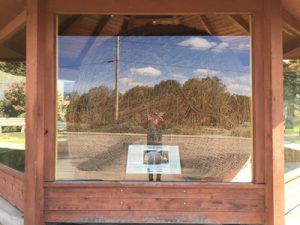I’ve been thinking a lot about flexibility lately and thought I’d share some of my preliminary musings. I’ve been randomly asking people the question, “Why are we so often awed by flexibility? Why do so many asana practitioners want to be more and more flexible?”
Often, the first response is a moment of silence or an upturned eyebrow. Sometimes – especially when it’s early in the morning – that silence is followed by more silence.
Other responses include:
It looks cool.
I think would feel good to be able to do it.
It’s a beautiful aspect of the human form.
It connotes a sense of freedom.
I want to be flexible so my body is not in the way.
A response I found especially interesting was from an athletic person who has practiced yoga for a long time. She suggested that because becoming flexible feels good, becoming more flexible would feel even better.*
But is more flexibility always better?
Lately I’ve been feeling rather negative about the emphasis on flexibility that I see and hear in social media. There are so many Instagram pictures of people in performative pretzel poses that many people I speak with are adverse to yoga because they simply think they are not flexible enough to do it.
But the real reason that I’ve been critical about the focus on flexibility is that I’m seeing how it hurts people. Along with the damage it can do to one’s body image, the emphasis on flexibility can cause bodily harm.
Feeling tightness is not necessarily a bad thing. Often it is our body giving a signal that we have reached the limits of our range of motion and perhaps should not go further. Sometimes it’s tricky to determine when we should accept these limits. If we didn’t have the sensation of tightness in our bodies we would be able to walk as well as a wet noodle.
Everyone I know has places in their body where they are more flexible and places where they are less flexible. For example, it’s very common for people to have extreme flexibility in the lower lumbar spine and very little in the upper thoracic spine. Without conscious awareness or training, our body movements often follow the path of least resistance. Without careful attention it is easy to feel that one is going deeper into a pose, but instead one may actually be creating greater imbalances by increasing the range of movement in the most flexible places and while stagnating in the other places. This pattern is especially common in backward bending positions. Over time, this kind of imbalance often leads to instability dysfunction, and pain.
Instead of trying to get one’s nose to one’s toes or one’s heels behind one’s head, I think it’s useful to consider what are the true benefits of developing and maintaining a certain level of flexibility.
It can be incredibly frustrating to not be able to sit on the floor, bend over to tie one’s shoes, or reach for a can of soup in an overhead cupboard.
Having the flexibility in our pelvis to sit on the front edge of our sit bones on the floor or on a chair gives us the ability to sit in a way that brings the natural curves of our spine into an alignment where our head is supported, our organs have space to function, we can breathe more deeply, and we can sit comfortably for the duration of a luxurious dinner or movie.
Having the flexibility to hinge at our hips and straighten our legs in downward facing dog gives us the ability to lengthen our spines and create more space between the vertebrae, which feels great after a long day or work or after a night of fitful sleep.
Having the flexibility to hinge at the hips in a standing or seated forward bend, gives us the flexibility to release our spine forward, which can enhance deep relaxation.
Having flexibility in our shoulders, wrists, rib cage and quadriceps, allows us to transition safely from being in a reclined position on the floor to lifting up into a backward bending position that opens the front of the spine – a movement that can be very energizing and often exhilarating.
All of these examples share a common theme: flexibility gives access to the spine and the opportunity to safely move it in a multitude of directions.
Whenever I see someone lengthen their spine after a long day of sitting, their eyes light up, the breath flows more freely and they often smile.
I suggest that asana practice should not focus on getting rid of feelings of tightness but rather on developing mobility so we can more easily access our spine. And since ‘flexibility’ is such a loaded term, perhaps substituting the term ‘mobility’ in its place will help guide this process.
One of my goals for teaching and practicing modern asana is to explore habits of movement as a way to cultivate balance. I am especially interested in the balance of strength and flexibility, and the balance of suppleness and stability. My belief is that these kinds of explorations can help us experience moments of comfort, ease and freedom in our bodies, which can permeate our entire being.
*There were a few responses that suggested a socio-political critique of modern yoga such as, “It’s a symbol of the privilege and power of the leisure class” and “it’s a sign of success.” I might discuss these comments at a later time.


